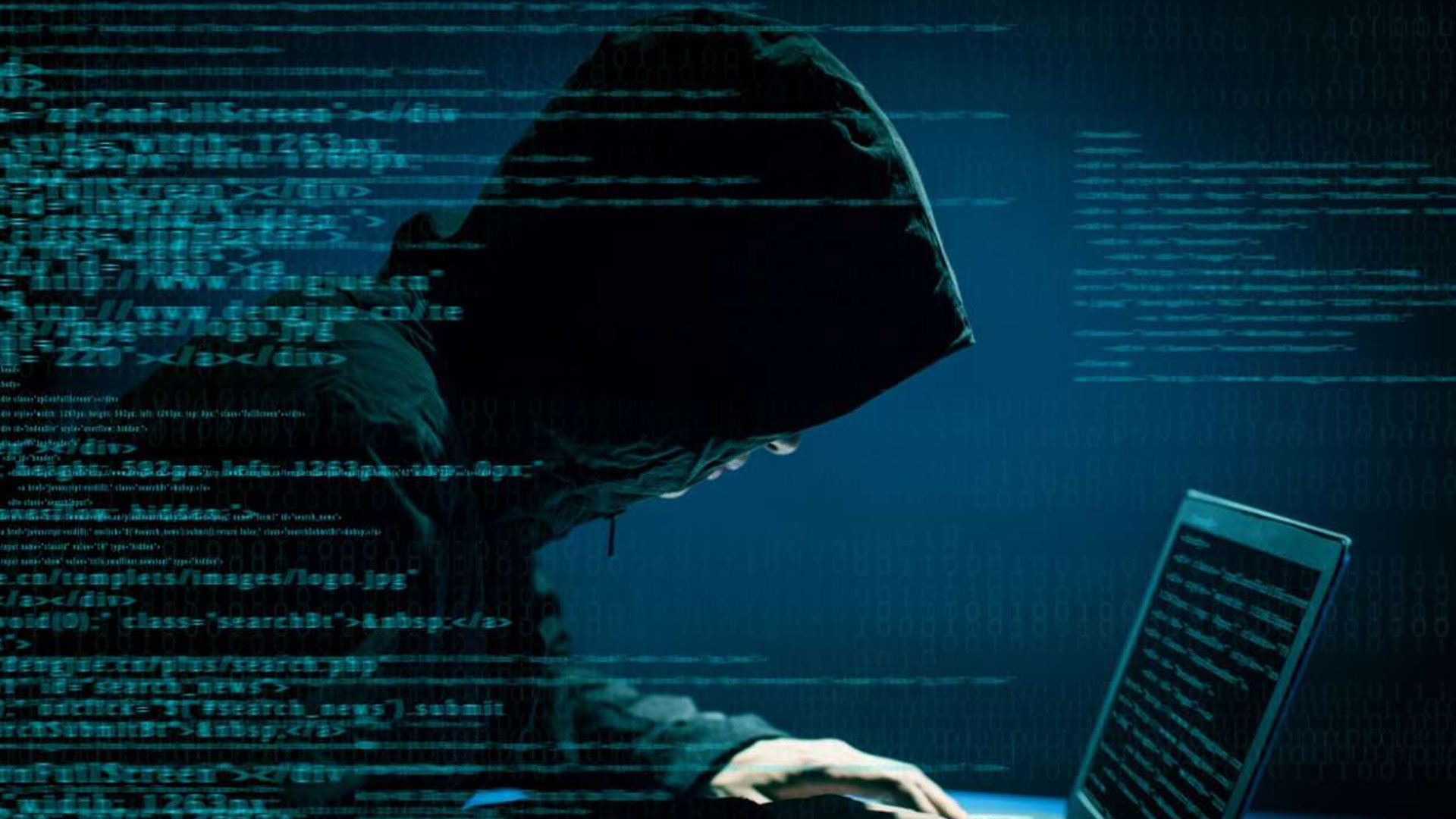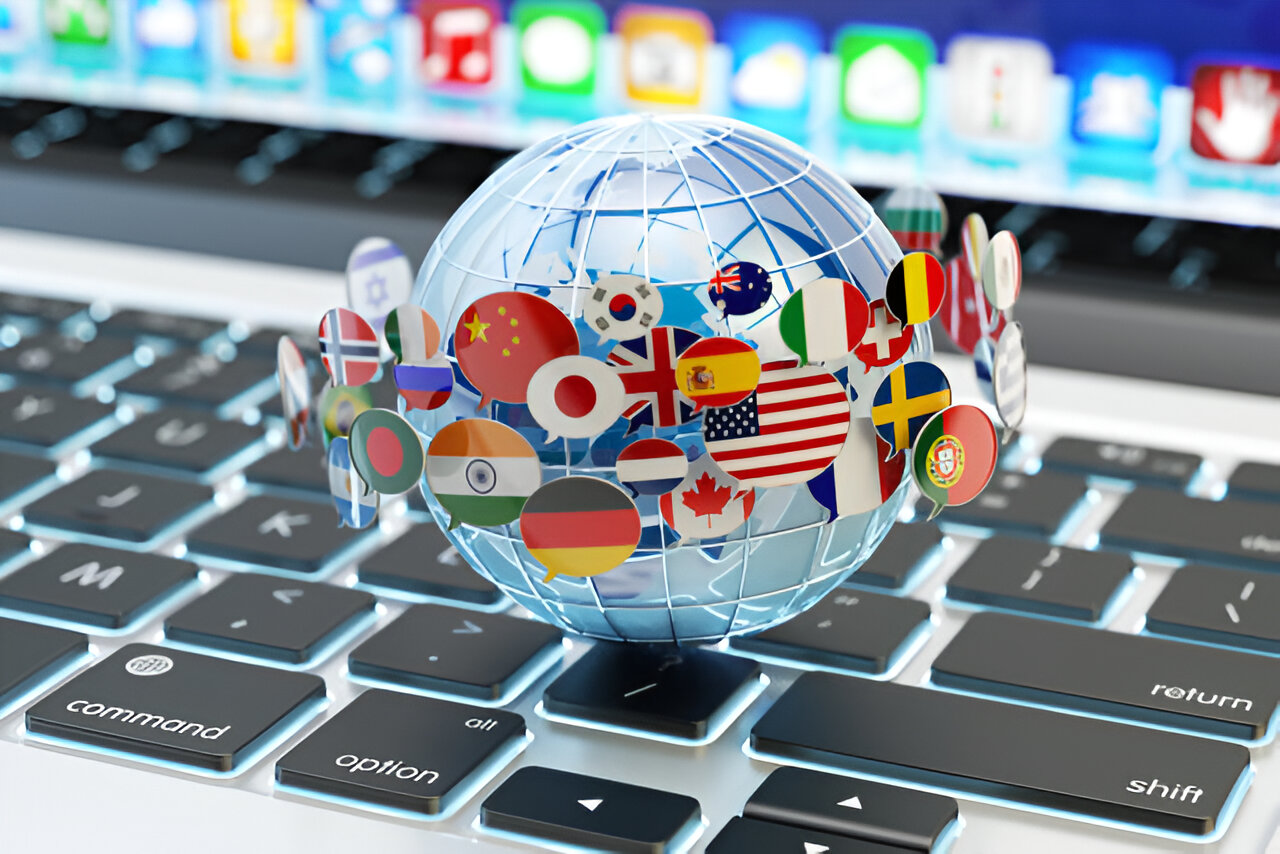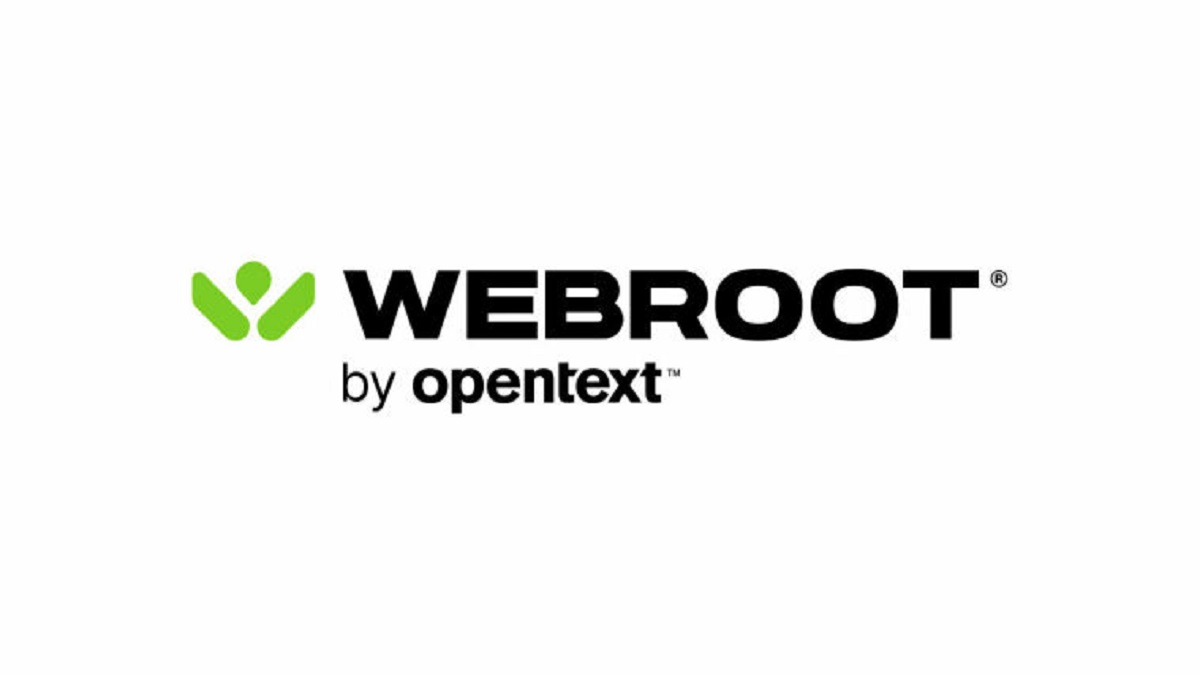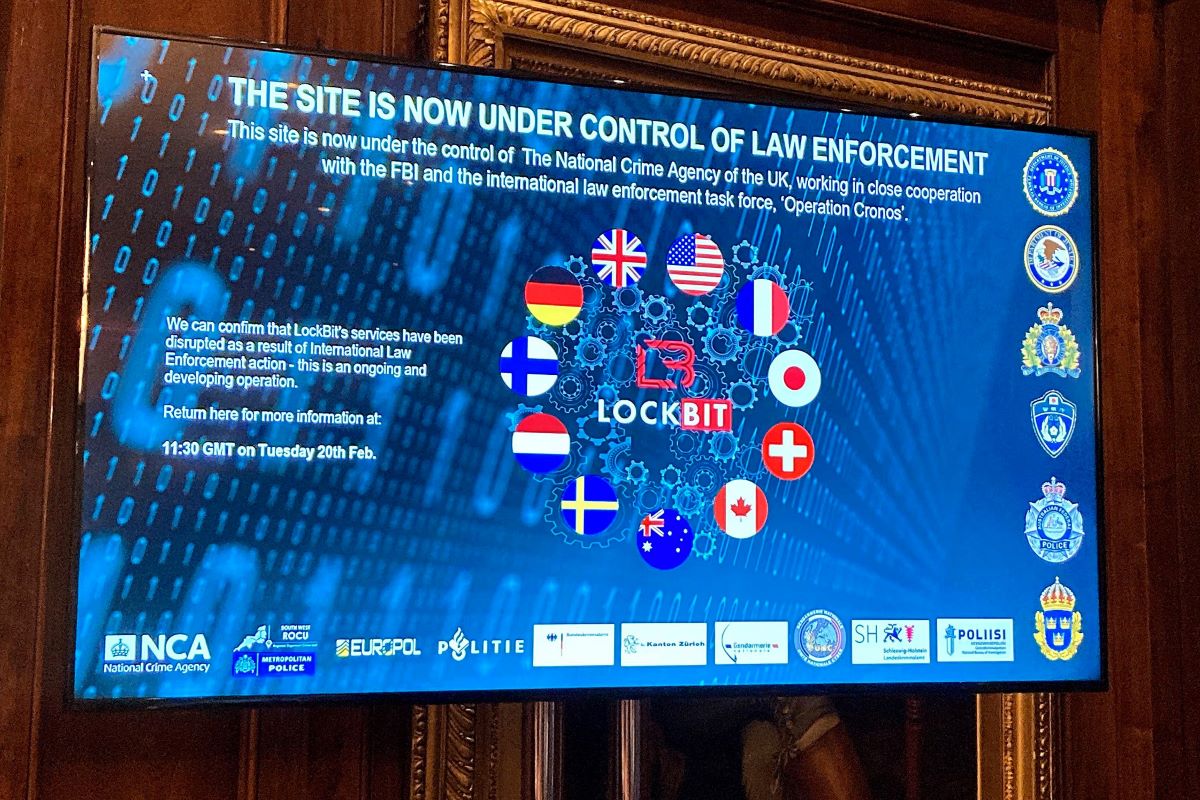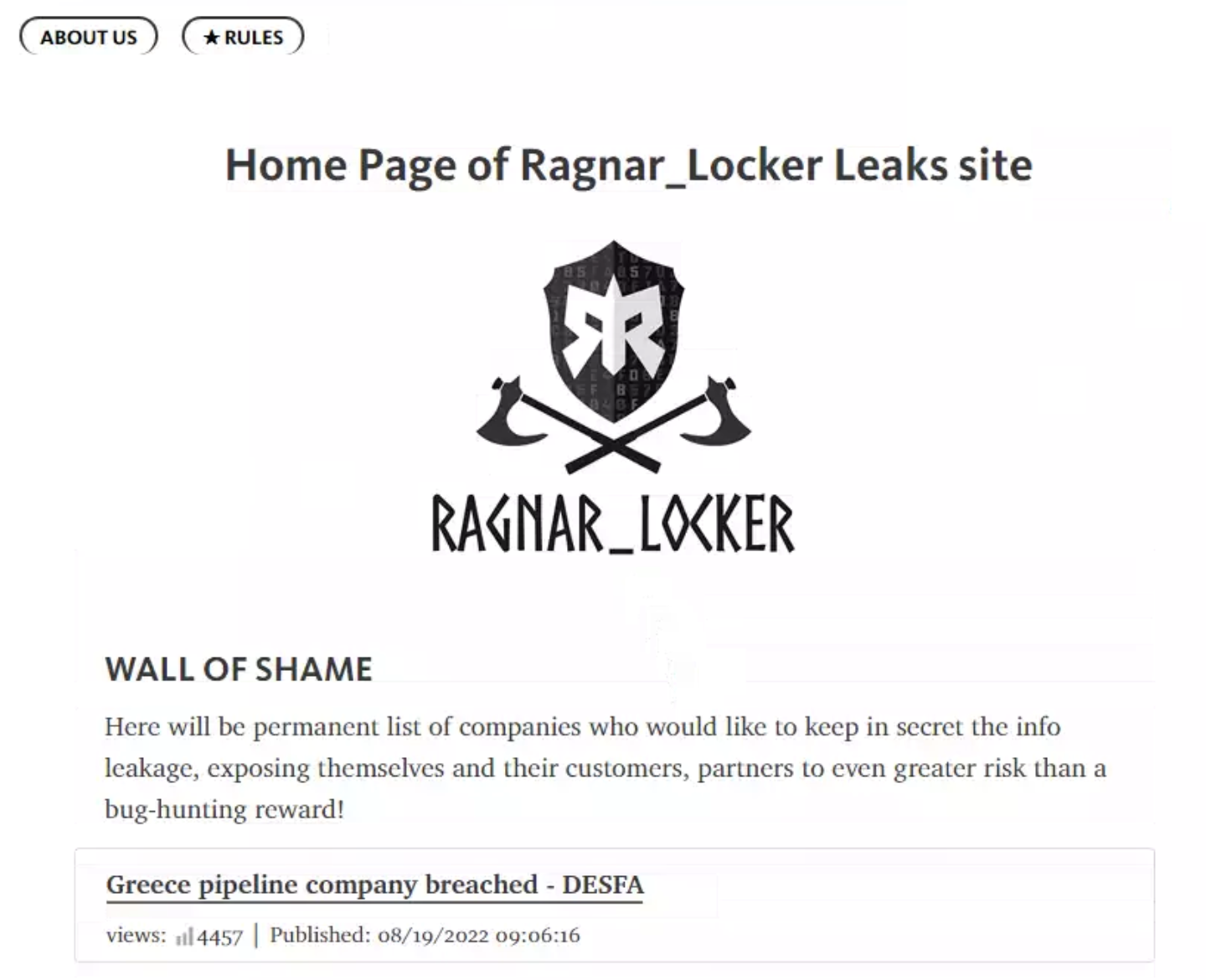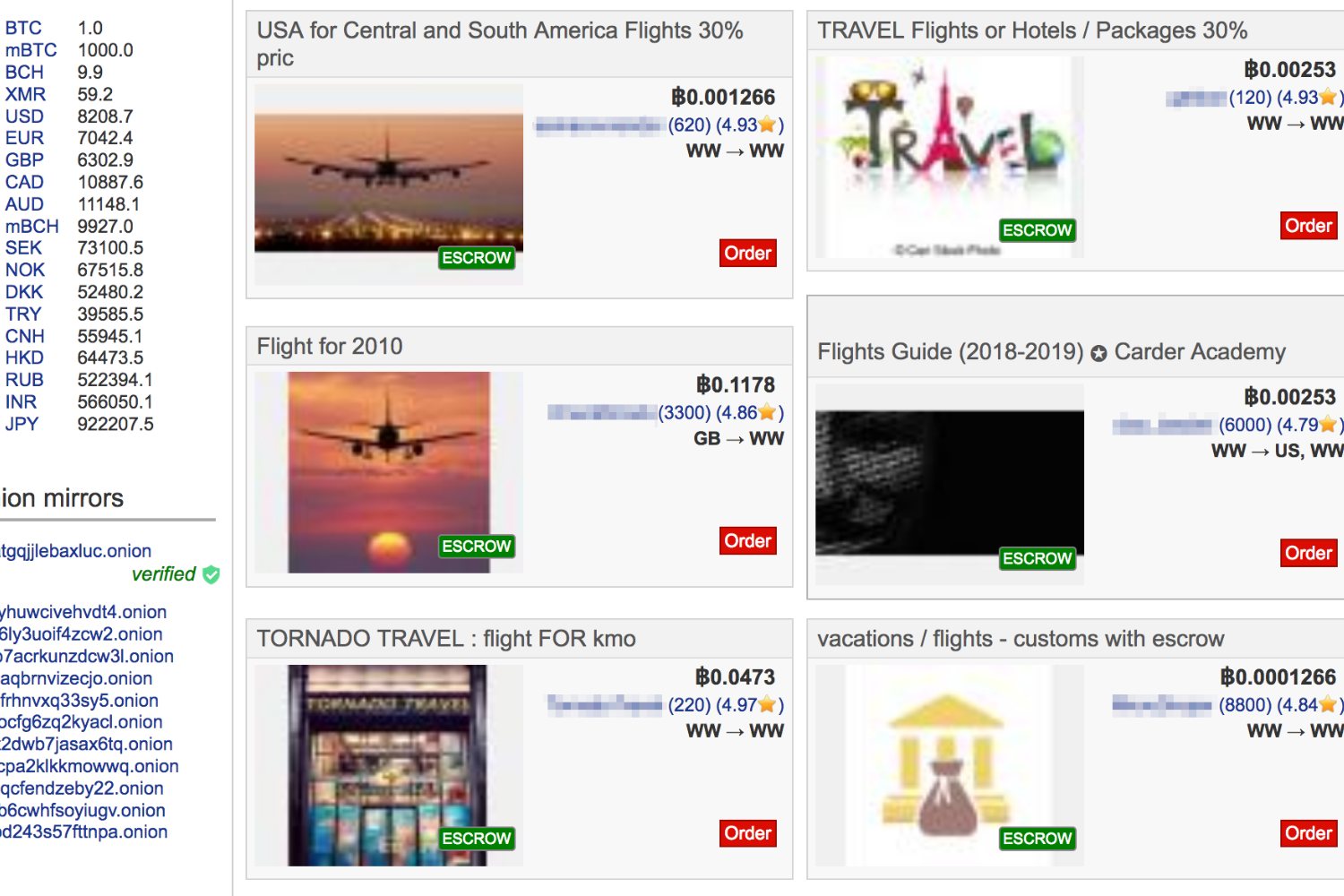Introduction
The dark web, often portrayed in popular media as a clandestine underworld, has captured the curiosity and fascination of many. It is a part of the internet that is not indexed by search engines, making it difficult to access and explore. While the term “dark web” is often associated with illicit activities and shady dealings, there are also legitimate and important uses for this anonymous online space.
Accessing the dark web requires specialized software, such as the Tor browser, which allows users to connect anonymously and navigate through hidden websites. This anonymity is achieved by encrypting user data and bouncing it through a network of volunteer-operated servers, making it virtually impossible to trace back to the user’s original location. While the dark web offers privacy and anonymity, it also provides a breeding ground for illegal activities.
Illegal activities on the dark web range from drug trafficking and the sale of stolen data to the provision of hacking tools and even human trafficking. Criminal marketplaces operate under the protection of anonymous networks, making it challenging for law enforcement agencies to intervene. However, it is important to note that not everything on the dark web is illegal or harmful.
Content that falls within a gray area, such as whistleblower platforms and censorship-evading platforms, can also be found on the dark web. These platforms provide a space for individuals to share sensitive information without censorship or fear of retaliation. Additionally, the dark web can be a source of otherwise restricted and censored information, allowing individuals in repressive regimes to access knowledge and resources they would not otherwise be able to obtain.
Cryptocurrency is the preferred form of payment on the dark web due to its decentralized nature and the ability to maintain anonymity during transactions. This makes it a hotspot for money laundering and illegal financial activities. However, it is essential to recognize that cryptocurrency also has legitimate uses and provides opportunities for economic growth and financial inclusion.
In this article, we will delve into the various aspects of the dark web, exploring both the illegal activities and the legitimate uses it can offer. By understanding the dark web, we can gain insights into the complex and multifaceted world that exists behind the shadows of the internet.
Accessing the Dark Web
Accessing the dark web is not as simple as typing a URL into your browser. It requires specialized software that allows users to connect anonymously and navigate through hidden websites. The most widely used software for this purpose is the Tor browser, which stands for The Onion Router.
The Tor browser routes your internet traffic through a network of volunteer-operated servers, encrypting your data at each step. This makes it incredibly difficult for anyone to trace your online activity back to your original IP address. However, it is essential to note that while the Tor browser provides anonymity, it does not offer complete security. Users still need to exercise caution and follow best practices to protect their privacy.
Once you have downloaded and installed the Tor browser, you can access the dark web by entering a “.onion” address into the browser’s address bar. These addresses are not like regular URLs and are typically a string of random characters followed by “.onion”. They are used to identify and locate hidden websites on the Tor network.
However, it is important to note that not all websites on the dark web are accessible or trustworthy. While the Tor network provides a certain level of anonymity, it does not guarantee the legitimacy or safety of the websites you encounter. The dark web is a haven for scams, malware, and illegal activities.
It is crucial to exercise caution and follow certain guidelines when accessing the dark web. Avoid clicking on unknown links or downloading suspicious files. Stick to well-known and reputable websites, especially if you are seeking information or engaging in legal activities. Additionally, using a virtual private network (VPN) along with the Tor browser can add an extra layer of security and privacy.
It is worth noting that accessing the dark web may be illegal in some jurisdictions, especially if you engage in illegal activities or access prohibited content. Before exploring the dark web, it is essential to understand the legal implications and potential risks involved.
By understanding the technical aspects of accessing the dark web and taking necessary precautions, users can navigate this hidden part of the internet with a greater level of confidence and security.
Anonymity on the Dark Web
One of the defining features of the dark web is the anonymity it provides to its users. Anonymity on the dark web is achieved through the use of specialized software, such as the Tor browser, which routes internet traffic through a network of volunteer-operated servers.
By encrypting and bouncing data through multiple servers, the Tor network makes it incredibly difficult for anyone to trace the origin of online activity. This level of anonymity is especially crucial for individuals seeking to bypass censorship, protect their privacy, or engage in activities that may be considered illegal or subversive.
The dark web offers individuals the freedom to express themselves without fear of retribution or surveillance. It provides a platform for whistleblowers and activists to share sensitive information without censorship or the risk of their identities being exposed. This anonymity can be crucial for the uncovering of corruption, human rights violations, and other forms of wrongdoing.
However, it is important to recognize that anonymity on the dark web has its drawbacks as well. While it can protect users from surveillance and censorship, it also creates an environment where illegal activities thrive. Criminals, hackers, and individuals engaged in illicit activities take advantage of the anonymity offered by the dark web to conduct their operations.
Law enforcement agencies face significant challenges when it comes to identifying and apprehending individuals involved in illegal activities on the dark web. The decentralized nature of the Tor network and the use of cryptocurrency for transactions make it difficult to trace and identify criminals.
While anonymity is a fundamental feature of the dark web, it is crucial to note that it is not absolute. Researchers and law enforcement agencies have developed techniques to deanonymize users on the dark web by exploiting vulnerabilities or analyzing patterns of behavior and connections.
Additionally, users must also exercise caution to maintain their anonymity on the dark web. Being vigilant about personal information, avoiding using identifiable usernames or email addresses, and taking necessary precautions to protect one’s identity are essential steps in maintaining anonymity on the dark web.
Understanding the dynamics of anonymity on the dark web is vital for users who want to navigate this hidden part of the internet while minimizing the risks associated with illegal activities and maintaining their privacy.
Illegal Activities on the Dark Web
The dark web has gained notoriety for being a hub of illegal activities. The anonymity and encryption provided by the dark web attract individuals involved in illicit practices, creating an underground marketplace for various illegal goods and services.
One of the most prominent illegal activities on the dark web is the sale and distribution of drugs. Numerous dark web marketplaces offer a wide range of illicit substances, from marijuana to opioids and synthetic drugs. These marketplaces operate using the anonymity of the dark web and often use cryptocurrencies as a form of payment, making it difficult to trace the transactions and identify the individuals involved.
In addition to drugs, the dark web is also a hotspot for the trafficking of weapons and explosives. These illegal marketplaces offer a range of firearms, ammunition, and even dangerous explosives. The anonymity provided by the dark web makes it easier for criminals to purchase these items without leaving a trace.
Another thriving illegal activity on the dark web involves the sale and trade of stolen data and personal information. Cybercriminals exploit vulnerabilities in databases and networks, stealing sensitive information such as credit card details, Social Security numbers, and login credentials. This stolen data is then sold on the dark web to be used for unauthorized activities such as identity theft and fraud.
Counterfeit goods are also prevalent on the dark web. Sellers offer a wide range of fake luxury items, including designer clothing, accessories, electronics, and even counterfeit medication. The anonymity of the dark web enables these sellers to evade law enforcement and profit from the sale of counterfeit goods.
Hacking tools and services are readily available on the dark web, catering to individuals with malicious intent. These tools include malware, exploit kits, and hacking tutorials, allowing inexperienced individuals to carry out cyberattacks and data breaches. The availability of such tools contributes to the increase in cybercrime activities.
Organized crime networks also utilize the dark web for various illegal services. Hitman services, contract killings, and extortion are offered through hidden websites, making it easier for criminals to conduct their operations discreetly. The anonymity of the dark web provides a cloak for these criminal activities.
While the dark web is widely associated with illegal activities, it is important to remember that not everything on the dark web is illegal or harmful. There are legitimate uses for anonymity and privacy, such as whistleblowing, accessing censored information, and engaging in political activism.
Understanding the prevalence of illegal activities on the dark web emphasizes the need for law enforcement agencies to closely monitor and combat these activities. It is essential for users to exercise caution, maintain their online security, and report any suspicious or illegal activities they come across.
Drugs and Paraphernalia
One of the most prominent and well-known illegal activities on the dark web is the sale and distribution of drugs. Through dark web marketplaces, individuals can easily access a wide range of illicit substances and narcotics.
The dark web provides a platform for drug dealers to reach a global market and operate with anonymity. Various drugs, including marijuana, cocaine, heroin, MDMA, and more, can be found on these marketplaces. Sellers often use discreet packaging and reliable delivery methods to ensure the safe arrival of the drugs to the buyers.
While the sale of drugs itself is illegal, the dark web marketplaces further exacerbate the issue by facilitating the purchase of dangerous substances. Buyers can browse user reviews and ratings to assess the quality and reliability of the drugs they intend to purchase. The availability of potent and potentially harmful substances increases the risk of drug abuse and addiction.
In addition to drugs, the dark web also offers a range of drug paraphernalia, including items used for consuming drugs, such as pipes, bongs, needles, and other related accessories. These items are often sold alongside the drugs themselves, allowing users to easily obtain the necessary tools to consume the substances they purchase.
The anonymity and encryption provided by the dark web make it challenging for law enforcement agencies to combat the sale and distribution of drugs. However, efforts have been made to identify and shut down these illegal marketplaces, resulting in occasional successful operations and arrests.
It is important to emphasize the dangers associated with buying drugs from the dark web. Despite the user reviews and ratings, there is no guarantee of the quality or purity of the substances being sold. Users may unknowingly consume substances that are laced with other harmful substances or of higher potency than expected, leading to adverse health effects and, in some cases, fatalities.
Furthermore, purchasing drugs from the dark web is illegal in most jurisdictions. Buyers run the risk of facing legal consequences if caught by law enforcement agencies while engaging in such activities.
Overall, the dark web has become a haven for drug dealers and buyers, providing them with an anonymous platform to operate and conduct illegal transactions. Efforts to combat the sale and distribution of drugs on the dark web are ongoing, with law enforcement agencies and international collaborations working to disrupt these illicit operations.
Weapons and Explosives
The dark web is not only a marketplace for drugs and illicit substances but also a platform for the sale and distribution of weapons and explosives. The anonymity and encryption provided by the dark web make it an ideal environment for individuals seeking to engage in illegal arms deals.
On the dark web, users can find a range of firearms, ammunition, and even dangerous explosives available for purchase. Sellers operate under pseudonyms and utilize encrypted communication channels to protect their identities and transactions.
These illegal marketplaces offer a variety of weapons, including handguns, assault rifles, knives, and other firearms. Buyers can browse through listings that provide detailed descriptions of the available weapons, including specifications, conditions, and pricing. Some sellers even offer customization options for firearms.
Alongside firearms, the dark web also provides access to explosives and bomb-making materials. These listings can include detailed instructions on constructing homemade explosives or purchasing ready-made explosive devices. The availability of such dangerous materials poses serious threats to public safety and national security.
Law enforcement agencies face significant challenges in combating the sale of weapons and explosives on the dark web. The anonymity of buyers and sellers, along with the use of cryptocurrencies for transactions, makes it difficult to track and identify those involved in these illegal activities.
Efforts have been made to investigate and shut down these illicit marketplaces on the dark web. Law enforcement agencies around the world collaborate to identify and apprehend individuals engaged in illegal arms dealing. However, the dynamic nature of the dark web and the constant emergence of new marketplaces pose ongoing challenges.
It is important to highlight the potential dangers that arise from the sale and distribution of weapons and explosives on the dark web. The availability of firearms and explosives to individuals with malicious intent can result in increased violence and potential acts of terrorism.
Furthermore, individuals who purchase weapons or explosives from the dark web may unknowingly become part of criminal networks or expose themselves to law enforcement scrutiny. Engaging in such illegal transactions can have severe legal consequences.
Authorities continue to monitor and disrupt these illegal activities on the dark web, implementing strategies to identify and apprehend those involved in the sale and distribution of weapons and explosives. Collaborative efforts between law enforcement agencies and international partnerships are essential in combating this global issue.
Stolen Data and Personal Information
The dark web has become a thriving marketplace for stolen data and personal information, enabling cybercriminals to profit from the unauthorized acquisition and sale of sensitive data. This illicit trade poses significant risks to individuals, businesses, and even governments.
Cybercriminals exploit vulnerabilities in databases, networks, and personal devices to gain access to sensitive information, including credit card details, Social Security numbers, login credentials, and other personally identifiable information (PII). They then sell this stolen data on the dark web to other cybercriminals or individuals seeking to engage in identity theft, fraud, or other malicious activities.
Dark web marketplaces offer various categories and listings dedicated to the sale of stolen data. Buyers can search for specific types of information or even request customized data packages tailored to their specific needs. The availability and ease of access to such data on the dark web fuel the thriving market for stolen personal information.
While the dark web provides anonymity to buyers and sellers, it also poses risks to individuals whose data has been compromised. The repercussions of having personal information leaked can be severe, ranging from financial loss to reputational damage and identity theft.
Efforts to combat the sale and distribution of stolen data on the dark web involve collaborations between law enforcement agencies, cybersecurity firms, and organizations dedicated to tracking and monitoring illicit online activities. These efforts aim to disrupt cybercriminal networks and provide timely notifications to individuals and businesses whose data has been compromised.
Individuals can take proactive measures to protect their personal information from ending up on the dark web. This includes practicing good cybersecurity hygiene, such as using strong and unique passwords, regularly updating software and security patches, and being cautious of phishing attempts or suspicious online activities.
Businesses also play a critical role in safeguarding customer data. Implementing robust security measures, regularly auditing systems for vulnerabilities, and educating employees on cybersecurity best practices are essential steps in preventing data breaches and the subsequent sale of stolen information on the dark web.
Overall, the sale of stolen data and personal information on the dark web poses significant risks to individuals and organizations. It is essential for individuals to remain vigilant and take necessary precautions to protect their personal information, while law enforcement agencies and cybersecurity professionals continue their efforts to disrupt and dismantle these illicit operations.
Counterfeit Goods
The dark web is a thriving marketplace for counterfeit goods, offering a wide range of fake products and fraudulent replicas. Counterfeit goods refer to unauthorized imitations of popular brands or products, which are often manufactured and sold without the consent of the original brand owners.
On the dark web, sellers offer counterfeit versions of luxury items, including designer clothing, accessories, electronics, and even counterfeit medication. These counterfeit goods are often marketed as authentic, making it difficult for buyers to differentiate between genuine and fake products.
The anonymity provided by the dark web allows sellers to operate discreetly, evading the efforts of brand protection agencies and law enforcement. They leverage encrypted communication channels and cryptocurrencies to facilitate transactions while minimizing the risk of being detected.
The sale of counterfeit goods on the dark web not only results in financial losses for legitimate brand owners but also poses risks to consumers. Counterfeit products are often of inferior quality, lacking the safety standards and quality control of genuine products. This can lead to potential health and safety hazards for unsuspecting buyers.
The fight against counterfeit goods on the dark web involves collaborations between brand protection organizations, law enforcement agencies, and cybersecurity experts. These efforts focus on identifying and taking down websites and marketplaces that facilitate the sale of counterfeit products.
Consumers can protect themselves from purchasing counterfeit goods on the dark web by being cautious and practicing due diligence. They should be mindful of deals that seem too good to be true and look for reliable sellers with positive ratings or feedback on legitimate platforms.
Brand owners also play a crucial role in combating the sale of counterfeit goods. They frequently monitor the dark web to identify infringing sellers and take legal action to protect their intellectual property rights. In some cases, they may collaborate with law enforcement to investigate and disrupt criminal networks involved in the production and distribution of counterfeit goods.
It is important to raise awareness about the risks associated with purchasing counterfeit goods and to encourage consumers to support legitimate businesses and brands. Additionally, continuous education and enforcement efforts are necessary to discourage individuals from engaging in the sale and purchase of counterfeit goods on the dark web.
Combating the sale of counterfeit goods on the dark web requires a multi-faceted approach that involves cooperation between stakeholders and ongoing efforts to enforce intellectual property rights and protect consumers.
Hacking and Cybercrime Tools
The dark web is not only a marketplace for illegal goods and services but also a hub for hacking tools and cybercrime resources. Individuals with malicious intent can easily access and acquire a range of tools and services designed to carry out cyberattacks and engage in various illicit online activities.
On the dark web, hackers offer various hacking tools, exploit kits, malware, botnets, and other resources that enable individuals to compromise computer systems, steal sensitive information, and carry out malicious activities. These tools are often sold or distributed under veiled identities, making it difficult to trace the origins of these cybercrime activities.
Hacking forums and communities facilitate the sharing of knowledge and techniques related to hacking and cybercrime. Individuals can exchange information, collaborate on hacking projects, and seek guidance on carrying out successful attacks. Such forums foster the growth and advancement of cybercriminal activities.
The anonymity provided by the dark web allows hackers and cybercriminals to sell their services without fear of detection. They offer services such as hacking social media accounts, email hacking, DDoS (Distributed Denial of Service) attacks, and even hacking into corporate networks for financial gain or corporate espionage.
Law enforcement agencies face significant challenges in combating the sale and distribution of hacking tools and cybercrime resources on the dark web. The decentralized nature of the dark web and the use of encryption techniques make it difficult to trace and apprehend those involved.
Cybersecurity professionals and organizations work tirelessly to monitor the dark web for any cybercrime-related activities. They collaborate with law enforcement agencies, sharing information and developing strategies to combat cybercrime and disrupt criminal networks.
It is vital for individuals and businesses to be vigilant and take necessary precautions to protect themselves from cyber threats. Implementing robust cybersecurity measures, regularly updating software and security patches, and educating users about the risks of hacking and cybercrime are crucial steps in mitigating these threats.
Efforts to combat hacking and cybercrime on the dark web require a multi-faceted approach, including raising awareness, increasing cybersecurity education, and strengthening international collaborations to enhance law enforcement capabilities. By working together, we can better protect individuals and businesses from the ever-evolving landscape of cyber threats.
Organized Crime and Hitman Services
The dark web serves as a platform for various forms of organized crime, including the provision of hitman services. Criminal networks utilize the anonymity and encryption provided by the dark web to carry out illegal activities discreetly, often operating under the radar of law enforcement agencies.
Hitman services on the dark web involve individuals or groups offering assassination services in exchange for payment. These individuals pose as hired killers, claiming to carry out contract killings on behalf of clients. They provide a range of services, including surveillance, planning, and execution of targeted individuals.
Organized crime groups also take advantage of the dark web to conduct their operations. They utilize hidden websites to coordinate criminal activities, engage in illicit trades, and launder money. The anonymity provided by the dark web makes it difficult for law enforcement agencies to monitor and disrupt these activities.
While it is challenging to ascertain the credibility and authenticity of hitman service listings on the dark web, it is important to note that law enforcement agencies treat all threats seriously and investigate any potential risks. The majority of hitman services on the dark web are scams, aiming to deceive users and extract money without any intention or capability to carry out their claimed services.
Criminal hitman services pose a significant risk to individuals who may mistakenly engage with them. It is crucial to report any suspicious activities related to hitman services or organized crime to the appropriate law enforcement authorities for investigation.
Mitigating organized crime and hitman services on the dark web requires cooperation between international law enforcement agencies, intelligence organizations, and cybersecurity experts. Collaborative efforts are essential to disrupt criminal networks, identify key actors, and dismantle the infrastructure that supports these illegal activities.
It is crucial for individuals to remain vigilant, recognizing the potential risks associated with the dark web and refraining from engaging with illegal services or criminal networks. By reporting suspicious activities and maintaining strong ties with law enforcement agencies, we can contribute to the efforts in combating organized crime and protecting society from the potential threats posed by hitman services.
Content and Services in a Gray Area
While the dark web is often associated with illegal activities, it is important to recognize that not everything on the dark web falls strictly into the realm of legality or illegality. There exists a gray area where certain content and services occupy a space that is neither clearly legal nor clearly illegal.
One example of content in the gray area on the dark web is whistleblower platforms and leaks. These platforms provide a space for individuals to anonymously share sensitive information without fear of censorship or retaliation. Whistleblower platforms can be instrumental in bringing forth evidence of corruption, misconduct, or other wrongdoing in both public and private sectors.
Censorship-evading platforms also exist on the dark web, offering the possibility to access information that may be restricted or censored in certain regions or under repressive regimes. Individuals seeking greater freedom of expression turn to these platforms to bypass government surveillance and access content that would otherwise be inaccessible.
However, it is worth noting that the dark web is also home to controversial and ethically questionable content. Disturbing or illegal content, such as explicit or violent material, can be found on hidden websites. The existence of such content creates ongoing debates about the boundaries of free speech and the responsibility of online platforms.
The sale of legal but gray-market items is another aspect of the dark web. These items may occupy a legal gray area due to issues such as trademark infringement, intellectual property disputes, or regulatory concerns. Examples include replica goods that closely resemble trademarked products or prescription medications that are sold without proper prescriptions.
Content and services in the gray area present challenges for both users and law enforcement. Determining the legality or ethical nature of such content is often subjective and varies across jurisdictions. Law enforcement agencies face difficulties in distinguishing between protected speech, controversial but legal content, and truly illegal activities on the dark web.
The regulation and governance of gray area content and services on the dark web require careful consideration and a nuanced approach. Striking a balance between protecting individual rights and preventing harm to society is a complex challenge that requires ongoing discussions, legal frameworks, and international cooperation.
As individuals, it is vital to be discerning and exercise critical thinking when navigating the gray area of the dark web. Understanding the potential legal and ethical implications of engaging with certain content or services can help users make informed decisions and avoid involvement in unlawful or harmful activities.
Whistleblower Platforms and Leaks
Whistleblower platforms and leaks play a crucial role in promoting transparency and accountability. On the dark web, hidden platforms provide a safe space for individuals to anonymously share sensitive information and expose wrongdoing or corruption without fear of censorship or retaliation.
Whistleblower platforms serve as intermediaries, connecting whistleblowers with journalists, activists, or concerned citizens who have the capacity to investigate and disseminate the information more widely. These platforms typically have built-in encryption and anonymity features to protect the identity of the whistleblowers.
Whistleblower leaks on the dark web have been instrumental in uncovering a wide range of issues, including government misconduct, corporate scandals, human rights abuses, and organized crime activities. By leaking classified or sensitive information, whistleblowers shed light on activities that would otherwise remain hidden from public scrutiny.
The dark web provides a level of protection for whistleblowers, shielding them from potential reprisals or retaliation. The anonymity it offers allows individuals to come forward with critical information without risking their personal safety or livelihood.
However, it is important to note that not all leaks on the dark web are motivated by noble intentions. Some leaks may be driven by personal gain, political motivations, or to harm individuals or organizations unjustly. As with any information, critical evaluation and verification are necessary to separate fact from fiction.
The role of whistleblowing platforms and leaks within society is a complex issue. Whistleblowing can help expose corruption, hold power structures accountable, and instigate positive change. However, it is essential to strike a balance between transparency and protecting national security, privacy, and intellectual property rights.
Recognizing the potential impact of whistleblowing platforms on society, governments and organizations have implemented varying mechanisms to protect and incentivize whistleblowers. These mechanisms aim to establish channels for reporting wrongdoing within legal frameworks and ensure legitimate concerns are addressed while preventing the misuse of sensitive information.
Whistleblower platforms and leaks on the dark web present challenges for law enforcement agencies. Balancing the need for transparency and accountability with upholding laws and protecting individuals’ rights requires ongoing discussions and updates to legal frameworks.
Ultimately, the existence of whistleblower platforms and leaks on the dark web highlights the importance of protecting individuals who come forward with valuable information. By offering a secure way to expose corruption and misconduct, these platforms contribute to the overall integrity and accountability of institutions and society as a whole.
Censored and Restricted Information
In repressive regimes or regions with strict censorship policies, the dark web provides a space for individuals to access and share information that is censored or restricted by authorities. Hidden websites on the dark web allow users to bypass government surveillance and overcome digital barriers to access otherwise prohibited content.
Censored and restricted information on the dark web encompasses a wide range of topics, including political dissent, human rights issues, suppressed news, and sensitive documents. Journalists, activists, and individuals living under oppressive regimes can utilize the dark web to access and distribute information without fear of censorship or retribution.
By evading government-imposed censorship, individuals can express their views freely and engage in open discussions. The dark web empowers individuals to share information, uncover truths, and shine a light on issues that may not receive attention through traditional media channels.
However, it is important to note that not all information on the dark web is inherently true or reliable. Just as in any other media platform, critical evaluation and verification of sources are necessary to separate accurate information from misinformation or propaganda.
Governments and authorities often argue that censorship is necessary to protect national security, public order, or cultural values. However, the dark web challenges these notions by providing an avenue for the free flow of information that would otherwise be suppressed.
The existence of censored and restricted information on the dark web emphasizes the ongoing struggle between freedom of expression and the control of information. It raises ethical and moral questions about the boundaries of censorship and the right to access information.
Addressing the issue of censorship and access to restricted information on the dark web requires international cooperation, dialogue, and advancements in technology. Balancing the need to protect citizens’ rights to access information with the legitimate concerns of national security and public order is a complex challenge.
The dark web serves as a reminder that individuals should have the liberty to seek and access information without facing censorship or restrictions. It raises questions about the role of governments, societies, and individuals in promoting transparency, protecting human rights, and fostering an open environment for the exchange of ideas.
As technology and societal norms evolve, ongoing discussions and the continual reevaluation of censorship policies will shape the future landscape of information access and freedom of expression.
Cryptocurrency and Money Laundering
The dark web has become closely associated with cryptocurrency due to its decentralized nature and the potential for anonymous transactions. Cryptocurrencies, such as Bitcoin, are commonly used on the dark web for various illegal activities, including money laundering.
Cryptocurrencies provide a level of anonymity and pseudo-anonymity that makes it difficult to trace transactions back to individuals. While the blockchain technology underlying cryptocurrencies promotes transparency, the use of specific privacy-focused features and mixing services on the dark web can obscure the transaction history and the parties involved.
This anonymous nature of cryptocurrency transactions has created opportunities for money laundering. Criminals can convert their illicitly obtained funds into cryptocurrencies, mix them with legitimate transactions, and then convert them back into traditional currencies, effectively disguising the origin of the funds.
The dark web facilitates money laundering by offering services that cater specifically to individuals looking to launder large sums of money. Money laundering schemes on the dark web typically involve using various cryptocurrency exchanges, mixing services, and tumblers to obfuscate the trail of illicit funds.
Authorities and financial institutions around the world are increasingly focusing on monitoring cryptocurrency transactions and implementing regulations to prevent money laundering. The Know Your Customer (KYC) and Anti-Money Laundering (AML) regulations require cryptocurrency exchanges and service providers to verify the identity of their users and report suspicious transactions.
While there are legitimate uses for cryptocurrencies and they have the potential to revolutionize financial systems, it is crucial to recognize and address the risks associated with their use on the dark web. The anonymous nature of cryptocurrency transactions makes it challenging for law enforcement agencies to investigate and prevent money laundering.
Efforts to combat cryptocurrency-related money laundering on the dark web involve international collaborations, improved regulatory frameworks, and technological advancements. Authorities are working closely with cryptocurrency exchanges, financial institutions, and cybersecurity experts to develop strategies that ensure compliance with regulations and enhance the traceability of financial transactions.
As the use of cryptocurrencies continues to evolve, it is important for individuals to understand the potential risks and exercise caution when engaging in cryptocurrency-related transactions. Staying informed about regulations and utilizing reputable platforms that comply with KYC and AML requirements can help mitigate the potential risks associated with money laundering on the dark web.
Addressing the issue of money laundering on the dark web requires a multi-pronged approach, combining legal measures, technological advancements, and increased awareness to create a more secure and transparent financial ecosystem.
Human Trafficking and Exploitation
As distressing as it is, the dark web has also become a platform for the facilitation and perpetuation of human trafficking and exploitation. The anonymous and unregulated nature of the dark web provides a fertile breeding ground for criminals involved in these heinous activities.
Human trafficking involves the illegal trade of individuals for the purposes of forced labor, sexual exploitation, or other forms of modern-day slavery. On the dark web, hidden websites and forums exist where human traffickers can advertise their victims and connect with potential buyers or exploiters.
The dark web provides cover for these criminals, making it difficult for law enforcement agencies to detect and dismantle their operations. Traffickers often use code words, encrypted communication, and cryptocurrencies to hide their identities and financial transactions.
Exploitation of vulnerable individuals, including children and adults, is prevalent on the dark web. Traffickers coerce, deceive, and manipulate their victims, subjecting them to horrific and degrading conditions. Victims are often forced into prostitution, forced labor, or other forms of slavery against their will.
Efforts to combat human trafficking on the dark web require international collaboration between law enforcement agencies, governments, and advocacy groups. Stricter laws, enhanced technological capabilities, and increased coordination are necessary to identify and prosecute traffickers, rescue victims, and provide them with the support and resources they need to rebuild their lives.
While progress is being made in the fight against human trafficking, the dark web continues to be a challenging frontier. Government agencies, non-profit organizations, and concerned individuals need to work together to raise awareness, report suspicious activities, and support initiatives that combat human trafficking.
It is important for individuals to recognize the signs of human trafficking and exploitation and report any suspicions to the appropriate authorities. These signs can include signs of physical abuse, restricted freedom of movement, sudden changes in behavior, and individuals seemingly under the control of others.
Education and awareness campaigns are crucial in combatting human trafficking on the dark web. By spreading knowledge about the tactics and dangers of traffickers, individuals can be better equipped to protect themselves and others from falling victim to this horrific crime.
Ultimately, ending human trafficking and exploitation on the dark web requires a comprehensive approach that involves legal measures, international cooperation, improved technology, and increased societal vigilance. Together, we can work towards dismantling these criminal networks and providing justice for the victims of human trafficking.
Social Forums and Marketplaces
Social forums and marketplaces on the dark web provide a platform for individuals to connect, exchange ideas, and engage in various activities. While some of these forums and marketplaces may cater to illegal activities, others serve as hubs for discussions, community-building, and legitimate transactions.
Dark web social forums offer a space for individuals with shared interests to communicate anonymously. These forums can cover a wide range of topics, including technology, privacy, politics, and even hobbies. Users can engage in discussions, share ideas, seek advice, and express themselves without fear of judgment or identification.
Marketplaces on the dark web present a mix of legal and illegal goods and services. These marketplaces operate similarly to e-commerce platforms, enabling users to buy and sell a variety of products, both legal and illicit. While some listings may offer illegal items like drugs or stolen data, others provide access to legal products or hard-to-find items that may not be easily accessible through traditional channels.
It is important to note that engaging in transactions on dark web marketplaces comes with inherent risks. Users must exercise caution and thoroughly evaluate sellers and listings to mitigate their exposure to scams or illegal activities.
While the dark web marketplaces have become notorious for facilitating the sale of illicit goods, it is essential to recognize that not all marketplace activities are illegal. Some sellers offer legal products such as books, art, rare collectibles, or specialty items that cater to niche markets.
Moreover, these marketplaces can serve as lifelines for individuals living in countries with restricted access to certain goods or services. For example, individuals living under repressive regimes may rely on the dark web to access information, media, or products that would otherwise be censored or unavailable.
Law enforcement agencies around the world face the challenge of monitoring dark web marketplaces, combating illegal activities, and maintaining a balance between protecting individuals’ rights and preserving public safety. These agencies collaborate with international counterparts and deploy various techniques to identify and disrupt criminal activities on the dark web.
To protect themselves while engaging with social forums and marketplaces on the dark web, individuals should exercise caution, practice good security hygiene, and be mindful of the legality and ethics of their actions. Recognizing the potential risks and taking necessary precautions can help mitigate the negative implications associated with the dark web.
Moreover, addressing illegal activities on the dark web requires continuous dialogue, collaborative efforts, and the development of robust legal frameworks. By working together, we can promote a safer and more responsible use of dark web social forums and marketplaces while deterring criminal behavior.
Conclusion
The dark web is a complex and multifaceted part of the internet that offers a level of anonymity and privacy not found on the surface web. While it is often associated with illegal activities, it is important to recognize that not everything on the dark web is inherently illegal or harmful.
The dark web provides a platform for illegal activities such as drug trafficking, weapons trading, stolen data sales, and human trafficking. Criminals take advantage of the anonymity and encryption provided by the dark web to carry out their operations, making it challenging for law enforcement to intervene.
However, the dark web also serves legitimate purposes, including whistleblowing platforms, censorship evasion, access to restricted information, and niche marketplaces for legal goods and services. These aspects highlight the importance of striking a balance between protecting individual rights and addressing unlawful behavior.
Addressing the challenges posed by the dark web requires a comprehensive approach. Law enforcement agencies, governments, technology companies, and individuals must work together to combat illegal activities, protect vulnerable individuals, and uphold the principles of transparency, privacy, and security.
Education and awareness play a crucial role in navigating the dark web responsibly. Individuals should exercise caution, understand the potential risks, and make informed decisions when engaging with dark web platforms and services. Recognizing the signs of illegal activities, reporting suspicious behavior, and following cybersecurity best practices can help mitigate risks associated with the dark web.
Efforts to combat illegal activities on the dark web should be coupled with advancements in technology, improved regulatory frameworks, and international collaborations. By developing innovative solutions, sharing knowledge, and enhancing enforcement capabilities, we can deter criminals and protect individuals from the harms associated with the dark web.
Ultimately, the dark web presents a complex and ever-evolving challenge for society. As our understanding of its intricacies grows, it is our responsibility to adapt and respond effectively, ensuring the internet remains a force for good while safeguarding individuals from the dangers that may lurk in the shadows.







